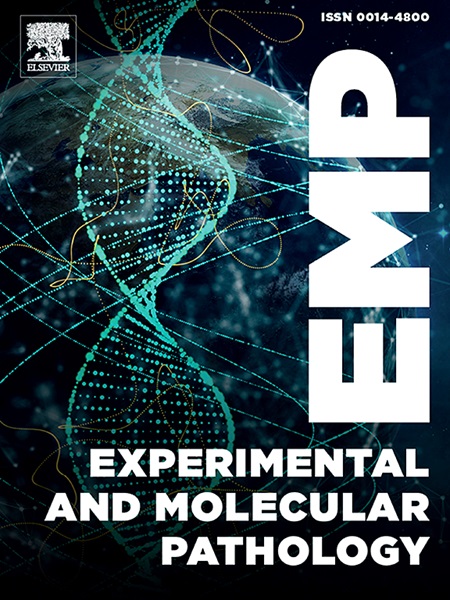饮食和运动对大鼠白细胞端粒长度、氧化应激和炎症标志物的影响
IF 3.7
4区 医学
Q2 PATHOLOGY
引用次数: 0
摘要
端粒长度是生物衰老的重要生物指标,受营养和体力活动的影响。本研究探讨了不同脂肪含量的饮食和增加体力活动对某些促/抗炎和氧化应激标志物以及衰老的影响。研究采用随机、实验和对照设计,将48只8周龄大鼠分为6个不同组(对照组(C)、运动组(E)、不饱和脂肪饮食(USF)、饱和脂肪饮食(SF)、不饱和脂肪饮食+运动组(USF + E)和饱和脂肪饮食+运动组(SF + E))。大鼠进行有氧游泳运动50天,并喂食不同脂肪含量的饮食。比色法测定TAS、TOS、MDA水平,ELISA法测定8-OHdG、IL-10、TNF-α水平。此外,白细胞端粒长度由PCR方法确定。体重变化也被记录下来。血浆TOS、OSI、TNF-α在USF组最低,SF和SF + E组最高。SF组MDA、8-OHdG和TG水平最高。c组IL-10水平最低,USF组IL-10水平最高。端粒与TOS、OSI和TNF-α之间也存在中度、负和显著相关。体重增加最多的组是C组、SF组和SF + e组。低饱和脂肪或高不饱和脂肪的饮食,体力活动与白细胞端粒长度以及氧化和促/抗炎标志物的改变有关。本文章由计算机程序翻译,如有差异,请以英文原文为准。
Influence of diet and exercise on leukocyte telomere length, markers of oxidative stress and inflammation in rats
Telomere length is an important biomarker of biological aging and is affected by nutrition and physical activity. This study investigated the effects of diets with different fat contents and increased physical activity on certain pro/anti-inflammatory and oxidative stress markers and aging. The study is performed in a randomized, experimental, and controlled design with 48 rats, 8 weeks old, divided into 6 different groups (Control (C), exercise (E), unsaturated fat diet (USF), saturated fat diet (SF), unsaturated fat diet + exercise (USF + E), and saturated fat diet + exercise (SF + E)). The rats performed aerobic swimming exercise for 50 days and were fed a diet with different fat content. TAS, TOS, and MDA levels were determined by colorimetric analysis while 8-OHdG, IL-10, and TNF-α were determined by ELISA. Additionally, leukocyte telomere length is determined by the PCR method. Weight changes were also recorded. Plasma TOS, OSI, and TNF-α were lowest in the USF group and highest in the SF and SF + E groups. MDA, 8-OHdG and TG levels were highest in the SF group. The lowest IL-10 level was detected in group C. TL level was the highest in the USF group. There was also a moderate, negative, and significant correlation between telomeres and TOS, OSI, and TNF-α. The groups with the highest body weight gain were C, SF, and SF + E. Diets low in saturated fat or high in unsaturated fat, and physical activity were associated with leukocyte telomere length and alteration of oxidative and pro/anti-inflammatory markers.
求助全文
通过发布文献求助,成功后即可免费获取论文全文。
去求助
来源期刊
CiteScore
8.90
自引率
0.00%
发文量
78
审稿时长
11.5 weeks
期刊介绍:
Under new editorial leadership, Experimental and Molecular Pathology presents original articles on disease processes in relation to structural and biochemical alterations in mammalian tissues and fluids and on the application of newer techniques of molecular biology to problems of pathology in humans and other animals. The journal also publishes selected interpretive synthesis reviews by bench level investigators working at the "cutting edge" of contemporary research in pathology. In addition, special thematic issues present original research reports that unravel some of Nature''s most jealously guarded secrets on the pathologic basis of disease.
Research Areas include: Stem cells; Neoangiogenesis; Molecular diagnostics; Polymerase chain reaction; In situ hybridization; DNA sequencing; Cell receptors; Carcinogenesis; Pathobiology of neoplasia; Complex infectious diseases; Transplantation; Cytokines; Flow cytomeric analysis; Inflammation; Cellular injury; Immunology and hypersensitivity; Athersclerosis.

 求助内容:
求助内容: 应助结果提醒方式:
应助结果提醒方式:


